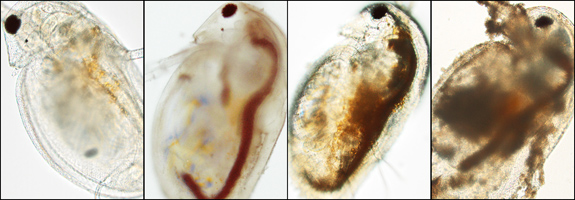Living in the Plasticene: Nanoplastics accumulates in freshwater zooplankton

J Saavedra, S Stoll, VI Slaveykova. 2019 “ Influence of nanoplastic surface charge on eco-corona formation, aggregation and toxicity to freshwater zooplankton” Environmental Pollution https://doi.org/10.1016/j.envpol.2019.05.135
Plastic production is continuously growing worldwide making plastics pollution a global environmental threat. Consequently, the concerns about possible environmental implications of plastics pollution are continuously raising. The objective of the present study is to improve the current understanding on the behavior and effects of nanoplastics in freshwater environment. The results revealed that polystyrene nanoplastics are ingested by the zooplankton and accumulate mainly in the gut of water flea Daphnia magna and larvae Thamnocephalus platyurus, and the stomach of rotifer Brachionus calyciflorus. The surface functionalization of the “as produced” nanoplastics determined their aggregation behavior, bioaccumulation and toxicity to zooplankton in freshwater environment. Carboxyl functionalized polystyrene nanoplastics being less toxic than the amidine polystyrene nanoplastics. Natural organic matter present in lakes affects the surface charge of nanoplastics and decreases their toxicity to zooplankton in a way dependent on the nanoplastic primary functionalization.
A personalized URL providing 50 days' free access to this article:
Anyone clicking on this link before July 28, 2019 will be taken directly to the final version of your article on ScienceDirect, which they are welcome to read or download. No sign up, registration or fees are required.
Version deposited in Archive ouverte UNIGE click here:
13 Jun 2019